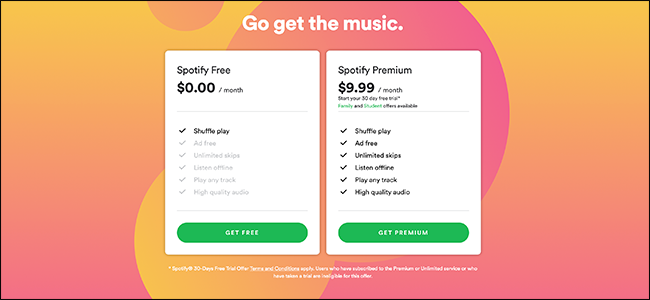Quick Links
Many apps we use follow a "freemium" business model. The combination of the words "free" and "premium" means you can download these apps for free, but you have to pay to get the premium features. Here's why many developers use this approach to monetize their software.
Freemium Apps Aren't New
Freemium software is a form of monetization that withholds certain features behind a paywall, whether it's a subscription or one-time payment. While use of this term only recently became widespread, this business model as a way to monetize digital goods has been around for a long time.
The practice of charging for additional features can be traced back to the rise of shareware and its variations. For example, trialware applications, such as old versions of Adobe Photoshop or Internet Download Manager, only worked for 30 days without a paid license.
There were also crippleware applications, which severely limited what you could do unless you paid. Video editing tools would often block entire toolsets, impose time limits, or add huge watermarks to your videos.
However, with the rise of mobile applications, freemium apps have become more prevalent than ever. In fact, they might be the most common kind of apps on your smartphone.
Freemium Apps Are Everywhere
A developer can monetize a mobile app in a few ways. The first option is to charge a fee upfront. However, with the amount of competition on the Play and App Stores, it's increasingly difficult to convince someone to purchase an app she can't try first.
Ads are another way to monetize an app, but most people are annoyed by them. They're also not the most reliable way to secure a profit.
That's why many developers select the third option: a freemium pricing strategy. Nearly every type of application, from productivity tools and weather widgets to dating apps, has a built-in freemium model. Even some photography apps, like the popular camera app VSCO for iPhone, charge a fee if you want to access special filters and styles.
Spotify also has free and premium tiers. With the free version, you get basic ad-supported music streaming. If you pay the monthly fee, though, you get stuff like offline music downloading, ad-free listening, and high-quality streaming.
Most cloud storage services, like Dropbox, OneDrive, and Google Drive, also follow the freemium model. You get a basic amount of free storage that you can supplement with additional paid space.
The freemium model isn't limited to consumer software---prominent enterprise services, like Slack, SurveyMonkey, and Asana use it, too.
The Rise of In-App Purchases and Free to Play
Much of the rise in freemium apps can be attributed to in-app purchases. Every mobile app in the Play and App Stores has the option to sell additional features. Most apps that utilize ads have an in-app purchase that allows you to remove ads entirely.
Since they're tied to your Google or Apple account, you can complete an in-app purchase by tapping a button. That's why many developers use something called a "dark pattern" to prompt you to spend money. This strategy includes popups that ask you to unlock additional features the first time you open an app or incredibly (and purposely) obtrusive ads.
In-app purchases are especially prevalent in "free-to-play" video games, which often follow the most egregious practices when it comes to monetization. Unlike apps that block specific features behind a paywall, games typically have microtransactions. These attempt to get you to repeatedly spend money on certain items, characters, or in-game currency.
There have been several incidents in the news of parents finding out their kid has spent an insane amount of money on in-game items. Some mobile games even limit the number of times you can play within a certain timeframe unless you pay up.
The Future of Freemium
The freemium model is unlikely to be phased out anytime soon. It allows developers to access a much wider audience for their apps and decreases the frequency of piracy. And some people are perfectly content with using the ad-supported versions of freemium apps. Others like that they get a free trial version of some apps before they purchase additional features.
Either way, to be a discerning consumer, it's important for you to know where your software comes from, and how its developers make money.



